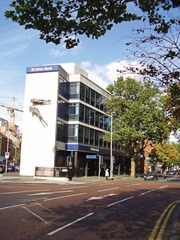Recovery reaches local banking
 Michael McKernan looks at the turbulent times for local banking since the credit crunch and the tentative signs of improvement.
Michael McKernan looks at the turbulent times for local banking since the credit crunch and the tentative signs of improvement.
The recent global financial crisis created the most difficult and challenging period the Northern Ireland banking sector has ever faced. Although the huge liquidity problems in Northern Irish banks had little to do with the derivatives and sub-prime lending chaos which had engulfed the banking world elsewhere (and a lot more to do with an unprecedented property bubble in Ireland), the result in terms of economic destruction was very similar.
In effect, the collapse of Irish banking resultant from a complete abandonment of normal prudent banking practice in land and property transactions, until the bubble burst, resulted in catastrophe not only for the banks themselves and their shareholders and employees, but for borrowers, savers, businesses and the local economy generally.
And six or seven years years on, following government bail-outs, extensive branch closures, thousands of redundancies and a real tightening of new lending, the crisis is not over. Only a few weeks ago Northern Ireland’s largest retail bank, Ulster Bank, announced yet more branch closures – its own survival the result of a bail-out of its bankrupt parent RBS by the UK Government.
Northern Ireland’s three other main banks had undergone similar transitions: Northern Bank was absorbed into Danish bank Danske Bank and effectively disappeared as a brand. First Trust Bank survived because its bankrupt parent AIB was bailed out (effectively nationalised) by the Irish Government, and Bank of Ireland required similar help from government.
The result of the bail-outs and recapitalisations of Northern Ireland’s ‘big four’ banks was further belt-tightening, restructuring and rationalisation, continuing bad debt write-off and much more restriction around new lending. In effect, the priority for all banks was to repair their balance sheets by calling in debt and bringing in cash early while charging higher fees and reducing lending.
For several years now, there has been an outcry from the business community that the banks have tightened credit so much that many small businesses are starved of working capital or denied the opportunity to grow because the investment finance is not available.
The Executive has pressurised the banks into lending more freely and there has been a Northern Ireland Affairs Committee inquiry into the structure of the local banking system. One issue highlighted was the need for more competition from new entrants.
There have also been some startling revelations about the extent some banks went to in order to bring in cash – in some cases where the result was the collapse of perfectly viable businesses. The banks have denied these excesses and claimed that they have been lending much more widely than their critics claim. What is not in doubt is that the level of mortgage lending remained low following the recapitalisations as did the level of participation of local banks in UK-wide government initiatives to stimulate credit availability.
The claims and counter-claims about bank support for business have been largely anecdotal in the absence of reliable disaggregated Northern Ireland figures for borrowing and lending. However following some pressure, the British Bankers Association has recently published data for Northern Ireland which showed that in the last two quarters of 2013, net borrowings by households and businesses fell.
New lending to SMEs was up year on year by some 40 per cent.
Although this is a snapshot, it suggests that while businesses and households are still paying down debt, businesses do now have reasonable access to the funds they need for growth. The banking sector has been through a torrid few years but there are now signs that even it is finally feeling the beneficial effects of the broader economic recovery.





